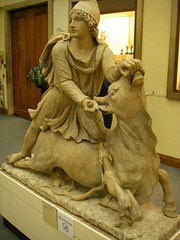
Orthodoxy itself is best defined as the victory of the belief that Jesus had actually lived a full human existence over the belief that he was a mystical being or a man from heaven, greater than the angels (see Hebrews 2.1-18).
And the foundation of this victory was the canonization of the Gospels. Paul’s letters, without the Gospels, could give no case against the docetic and gnostic views of Jesus. As Hoffmann remarks, these letters might even be viewed as sharing those views.
(This post presents an outline of another section of R. Joseph Hoffmann‘s introduction to the newly republished Jesus the Nazarene, Myth or History, by Maurice Goguel.)
Paul’s language of myth
Hoffmann remarks that Paul’s explanation of the way of salvation is described in mythical language. Note in particular Galatians 4.3-6, 9:
So also, when we were children, we were in slavery under the elemental spirits of the universe [archontes tou kosmou]. of the world. But when the time had fully come, God sent his Son, [to be] born of a woman, born under law, to redeem those under law, that we [too] might receive the adoption of sons. . . .
But now that you know God—or rather are known by God—how is it that you are turning back to those weak and miserable elemental spirits? Do you wish to be enslaved by them all over again?
So in Paul’s view of history, the human race that had long been damned was suddenly liberated from sin by the advent, death and resurrection of Christ, and this Christ “in significant respects resembled the savior gods of Hellenistic religion — especially Mithras.”
So what does Paul’s savior god and lord look like? Here are the descriptors as delineated by Hoffmann:
- he had no personal biography (or rather the merest of one: “born of a woman under the law”)
- “the most important events in his sketchless life were his death and resurrection — or rather revelation as a god.” — see, for example, the early Christian hymn quoted in Philippians 2.5-11:
- he originated as a god
- temporarily forsook his divinity
- was born in the likeness of man
- was killed
- was restored to full divinity by his Father-god
- Compare the same story in the “pro-Gnostic Hymn of the Pearl“
Paul’s claim is . . . that Jesus was a dying and rising savior God, a “redeemer” given to the Jews in the same way that Mithras had been given to the gentiles. (p.19-20)
